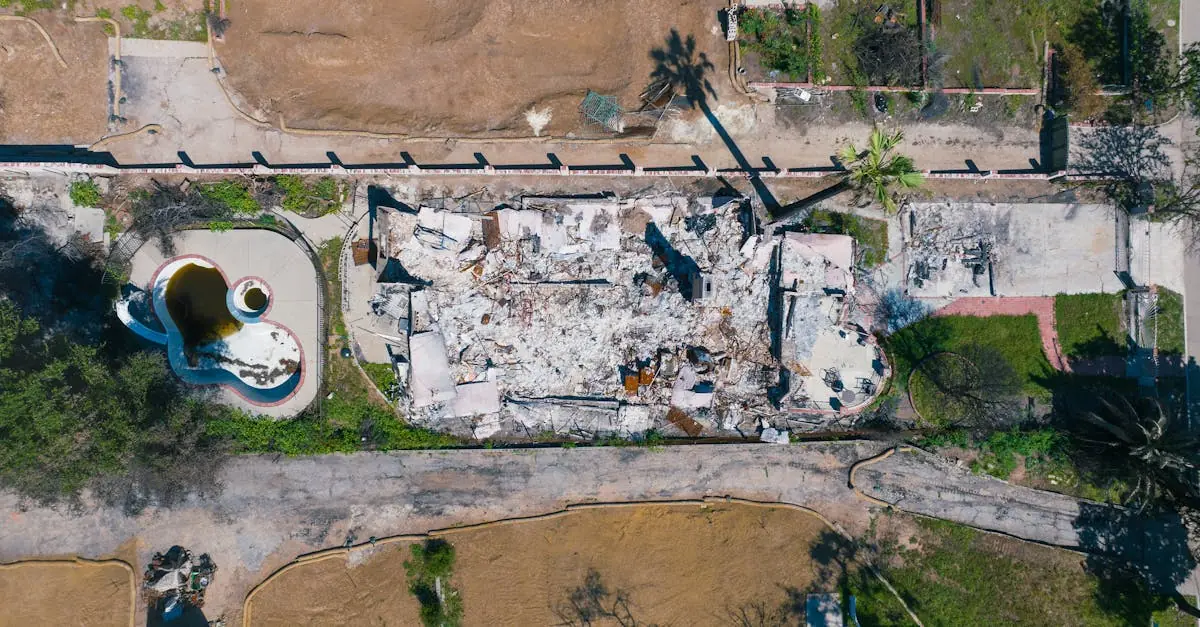When renting a home or apartment, the damage deposit can feel like a necessary evil. It’s that chunk of cash landlords hold onto, promising to return it if you don’t turn their property into a disaster zone. But let’s face it: navigating the world of damage deposits can feel like tiptoeing through a minefield of rules and regulations.
Table of Contents
ToggleUnderstanding Damage Deposit
Damage deposits represent a crucial component of rental agreements. They serve as a financial safeguard for landlords while introducing complexities for tenants.
Definition of Damage Deposit
A damage deposit, often referred to simply as a security deposit, is a sum paid by tenants before moving into a rental property. This deposit typically equates to one or two months’ rent. When the lease concludes, landlords assess the property’s condition to determine if any deductions from the deposit are necessary. Common deductions include repairs for damage beyond normal wear and tear. Understanding the exact terms and conditions in the lease agreement is essential for both parties.
Purpose of Damage Deposit
The primary purpose of a damage deposit is to protect landlords against financial losses. If tenants cause damage, the deposit covers repair costs without needing to involve legal proceedings. Similarly, it encourages tenants to maintain the property in good condition. Positive relationships often develop when both landlords and tenants understand the expectations tied to this deposit. Clear communication regarding the return process also aids in minimizing potential disputes after the rental term ends.
Types of Damage Deposits
Understanding the different types of damage deposits is essential for both landlords and tenants. Each type serves specific purposes depending on the rental context.
Residential Damage Deposits
Residential damage deposits primarily protect landlords from potential damages caused by tenants. Typically, these deposits represent one or two months’ rent, ensuring coverage for repairs. When tenants vacate the property, landlords inspect it for damages that exceed normal wear and tear. It’s common for landlords to deduct repair costs from these deposits before returning the remainder to tenants. Clear lease agreements outline conditions governing these deposits, helping to minimize disputes during the return process.
Commercial Damage Deposits
Commercial damage deposits function similarly to residential ones but cater to business properties. These deposits often cover significant repairs arising from tenant activities, with amounts generally larger than residential deposits due to the scale of potential damages. Landlords assess property condition after a business vacates, focusing on wear caused by daily operations. Terms outlined in lease agreements dictate the return process for these deposits, ensuring transparency and reducing conflict between landlords and tenants.
Legal Considerations
Damage deposits involve various legal implications landlords and tenants must understand. These implications often hinge on state-specific regulations which dictate how deposits are managed.
State-Specific Laws
Each state has unique laws governing damage deposits. For instance, some states limit the amount a landlord can collect, typically capping it at one or two months’ rent. States also specify timelines for returning the deposit after the tenant vacates, ranging from 14 to 60 days. Requirements for itemized lists detailing deductions may also exist. Familiarity with these laws ensures compliance and helps prevent legal disputes.
Rights and Responsibilities
Landlords and tenants share specific rights and responsibilities concerning damage deposits. Landlords must keep deposits in a secure account and provide clear lease terms that outline potential deductions. Tenants possess the right to receive their deposit back within the mandated time frame, provided they leave the property in good condition. Both parties benefit from documenting the property’s state upon move-in and move-out. This documentation aids in resolving conflicts and ensuring fairness in deposit returns. Understanding these rights helps promote a smoother rental experience.
Common Issues Related to Damage Deposits
Common issues often arise concerning damage deposits during rental agreements. Understanding these can enhance the rental experience for both landlords and tenants.
Disputes Over Deductions
Disputes over deductions frequently occur when tenants move out. Landlords may deduct for damages beyond normal wear and tear, leading to conflicts. Clear communication about the conditions that warrant such deductions is vital. Documentation, such as move-in and move-out inspection reports, can resolve disagreements effectively. Tenants may challenge deductions if they believe they are unjustified. Many jurisdictions allow tenants to request itemized lists of repairs, adding to the transparency of the process. Knowing state-specific regulations can aid in navigating these disputes.
Return of Damage Deposit
The return of damage deposits should occur within the timeframe set by state laws. Many states require landlords to return deposits within 30 days after the tenant vacates. If tenants leave the property in good condition, receiving the full deposit is expected. Communication about the return process helps manage expectations on both sides. Tenants should provide forwarding addresses to facilitate this process. If landlords delay or fail to return deposits without valid reasons, tenants might seek legal remedies. Understanding rights regarding deposit returns empowers tenants and promotes accountability among landlords.
Tips for Tenants and Landlords
Managing damage deposits requires attention to detail from both tenants and landlords. These best practices help foster a smooth rental experience.
Best Practices for Tenants
Documenting the property’s condition upon moving in is crucial for tenants. Taking clear photos can serve as valuable evidence against potential disputes later. Reading the lease agreement thoroughly ensures understanding of deposit terms and return policies. Communicating with landlords about the expected condition when moving out promotes transparency. Providing a forwarding address facilitates smooth deposit returns. Handling minor repairs promptly can help ensure a full return of the deposit. Staying informed about state regulations regarding damage deposits also supports tenant rights.
Best Practices for Landlords
Conducting a pre-move-out inspection offers landlords an opportunity to address issues early. Communicating clearly what constitutes normal wear and tear helps set expectations with tenants. Using written agreements that outline deduction conditions fortifies legal standing. Retaining detailed records of any repairs made during the tenancy enhances credibility. Returning deposits within the designated timeframe demonstrates professionalism and respect for tenants. Providing itemized lists of deductions promotes transparency and prevents disputes. Familiarity with state laws regarding damage deposits ensures compliance and protects both parties involved.
Conclusion
Navigating the world of damage deposits can be challenging for both tenants and landlords. Understanding the rules and regulations surrounding these deposits is crucial for a smooth rental experience. By maintaining clear communication and documenting the property’s condition, both parties can minimize disputes and foster positive relationships.
Tenants should be proactive in knowing their rights and responsibilities while landlords must ensure transparency in their practices. Following best practices can lead to fair outcomes and a more enjoyable renting process. Ultimately, a well-managed damage deposit system benefits everyone involved, creating a foundation of trust and accountability in rental agreements.








